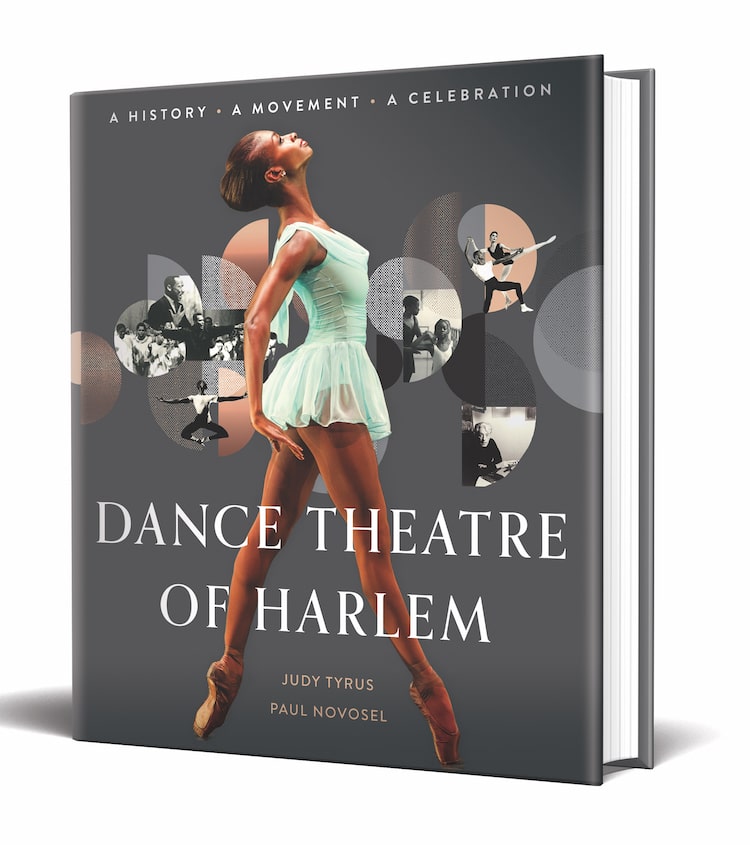
After years of meticulous research, authors Judy Tyrus and Paul Novosel have brought the rich history of the Dance Theatre of Harlem to life in a new book. Dance Theatre of Harlem: A History, A Movement, A Celebration brings together the stories and incredible visuals of the Company to paint a picture of its inspiring 50-year history.
Tyrus and Novosel both have intimate knowledge of the Dance Theatre of Harlem. Tyrus was a principal ballerina for the Company and Novosel was a pianist who worked with the Company for 10 years. This, combined with years spent organizing the Dance Theatre of Harlem archive, gave them the perfect foundation to work from. They are able to easily bring readers inside the Company, making them feel like insiders as they read through its fascinating history.
Across eleven chapters, Tyrus and Novosel work hard to put the achievements—and struggles—of the Dance Theatre of Harlem into context. By reminding us of what was happening in the world as the Company broke barriers, they reveal the incredible contributions that it gave to the world of ballet.
We were thrilled to speak with Tyrus and Novosel about their work, both as authors and artists. Read on for My Modern Met’s exclusive interview, where we take a look at their favorite moments from the book; and we discuss the challenges and rewards of working on the project. And don’t forget to pick up your copy of Dance Theatre of Harlem: A History, A Movement, A Celebration, published by Dafina Books.

Authors Judy Tyrus (Photo: Steven Brantstetter) and Paul Novosel (Photo: Patrick Loy)
How did you get started writing this book?
We had both worked at Dance Theatre of Harlem for a number of years, as a principal dancer and staff pianist, and it was not unusual for dancers and staffers to wear multiple hats for the sake of promoting the organization. We re-created ourselves as archivists. Out of necessity and survival, DTH had been open to volunteers, learning by doing, and championed an atmosphere where hard work made anything possible. Within a matter of five years, we had organized the archive. Heaps of photographs, scores, recordings, programs, and files, which had not been tended to in years, were put into some semblance of order, adding a system for identifying the different collections.
After perusing and organizing thousands of items, and copious conversation, it became apparent that the DTH archive was a rich reserve of valuable balletic history. Since a book on the Company had never been written, we were in a position to use the archive as a primary source for a history that has been ignored for too long. With access to the Company’s back-office and dance studio culture, and with a combined experience of over 50 years in the arts, it gave us exclusive agency to write about the accomplishments, celebrations, and disasters.
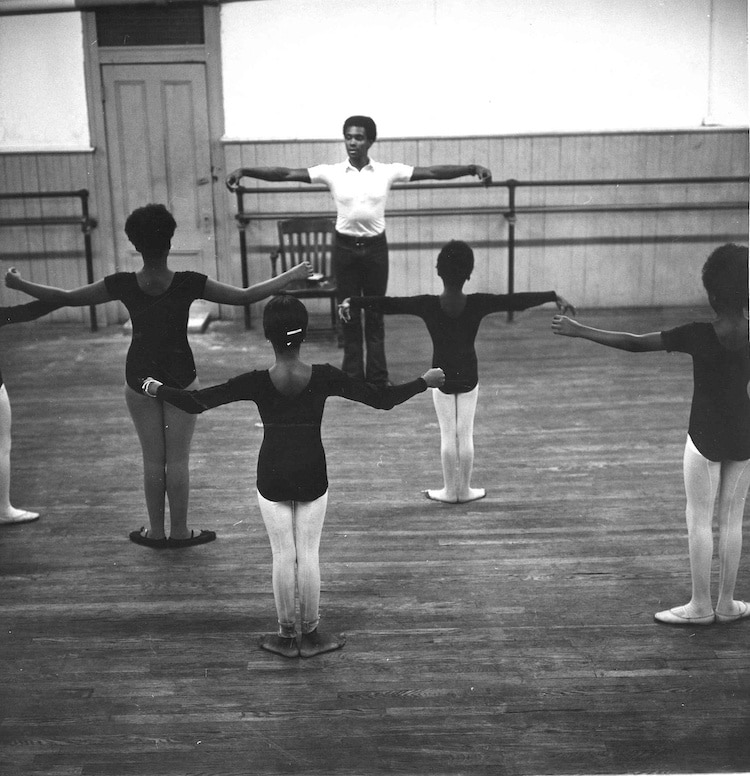
Arthur Mitchell teaching a ballet class, 1970. (Photo: Marbeth, Courtesy of the Dance Theatre of Harlem Archive)
What was one surprising thing that you learned while writing the book?
The past is always present. A well-organized accessible digital archive, personal or institutional, is a highly valuable entity that all should cherish, preserve, and respect. They hold the true story of us.
What was your biggest challenge in writing Dance Theatre of Harlem: A History, A Celebration, A Movement?
Keeping track of the sources and ordering the historical chronology was arduous. There were 50 years and thousands of performances, and thousands of dancers’ roles that needed to be documented and chronicled. Along with the school, the scope of the project was massive and daunting.
As history writers, finding a way to meld two voices into one was challenging, but gave us a thrilling rush of discovery. We had to dive deep into issues of culture, and surface our positions and opinions on themes, issues, and science. It was important for us to confront outdated vocabulary, for example, by adopting the “one race, many cultures” philosophy. Getting photographic rights was no party either.
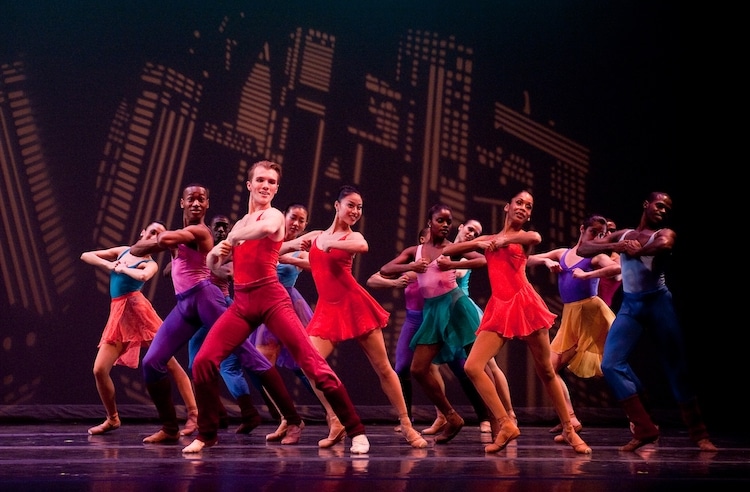
The Dance Theatre of Harlem Ensemble shown here in a revival of Billy Wilson’s Concerto in F (Photo: Rachel Neville)
How do you think that your experiences as a dancer and pianist within the Dance Theatre helped you as authors?
Paul Novosel: I played piano for hundreds of classes for the Company and in the School for 10 years. A staff pianist experiences ballet to its essence, literally, my piano music moved muscle, bone, and body. I’m an artist, so I am an observer. I observed everything at DTH—from studio to stage, from the back office to front office; the pain and the glory. I observed order—at the ballet barre. Being a part of the DTH family, engaging with brilliant staffers and talented dance artists informed my writing of this history—a history of a most wonderful place.
Judy Tyrus: I lived the life. For 22 years I served as a principal dancer on stages throughout the world with some of the greatest ballet artists on earth. Though I retired as a dancer and raised a family, I never left DTH. I created an exhibition with Arthur Mitchell, became a DTH archivist, and now, an author of its important history. DTH DNA endures for a lifetime. Dancing with this unique world-renowned company has a way of taking you on an odyssey that is fueled by community, diversity, discipline, dedication, perseverance, focus, refinement, and concentration. All these, in authoring, became my sustenance. Every bit of experience I had as a dancer is in this book. The highs as well as lows.
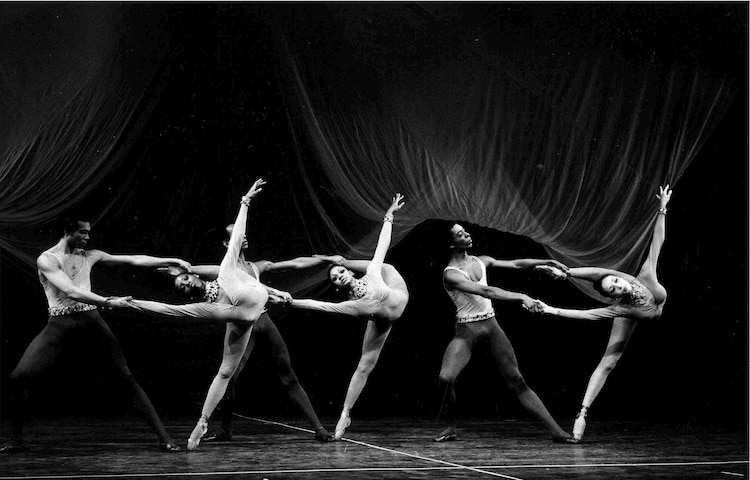
The Company in Arthur Mitchell’s Rhythmetron (Photo: Marbeth, Courtesy of the Dance Theatre of Harlem Archive)
Is there any part of the book that is your favorite or stands out to you in particular?
Paul: The stories of Doin’ It in Chapter 6, and St. Louis Women, in Chapter 8 get my heart racing. Founder Arthur Mitchell wanted these two shows to cross over to Broadway. Because musical theatre is one of my passions, and I had success composing two original shows that had legs, I empathize with Mitchell flirting with Broadway. In our book, we refer to a part of his personality as that of a gambler. Mounting a production for The Fabulous Invalid most often is a gamble. And a big Broadway gamble is always big news—it’s heaven or hell—read all-about-it!
Judy: As an archivist for Dance Theatre of Harlem, I became immersed in the thousands of photographs that tell the fascinating story from the founding of the Company to the present day. In perusing tens of thousands of images, taken by celebrated photographers from Marbeth to Martha Swope to Rachel Neville, I found that each image emitted its own idiosyncratic power. Many were never before published. I felt humbled to be an exclusive viewer. I was also awestruck by the ineffable artistry of these master photographers who, in our book, tell a parallel narrative in beautiful visuals, and preserve for generations one moment in time, a glimpse of history, preserved.
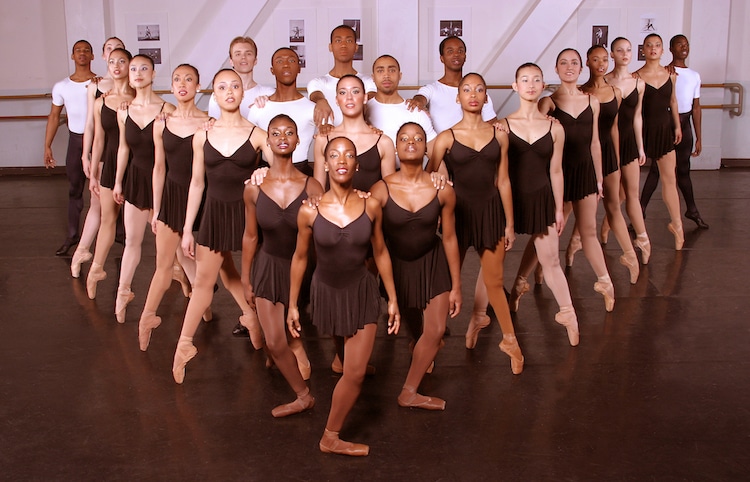
The Dance Theatre of Harlem Ensemble, 2009 (Photo: Joseph Rodman, Courtesy of the Dance Theatre of Harlem Archive)
What do you hope people will get out of reading Dance Theatre of Harlem: A History, A Celebration, A Movement?
We have written the book, in narrative form, that will appeal to ballet lovers and those who are new to classical dance as well. There is a balance between historical facts, personal reflections, critical reception, and humor. We hope that the reader will laugh, cry, be inspired, entertained, and learn a great deal about ballet and the phenomenal community-based company called Dance Theatre of Harlem, the “Miracle on 152nd Street.” But most importantly, that the reader will understand that the art form is for all people, regardless of skin color, once and for all—that everyone is worthy, and everyone matters.
Dance Theatre of Harlem: Shop
